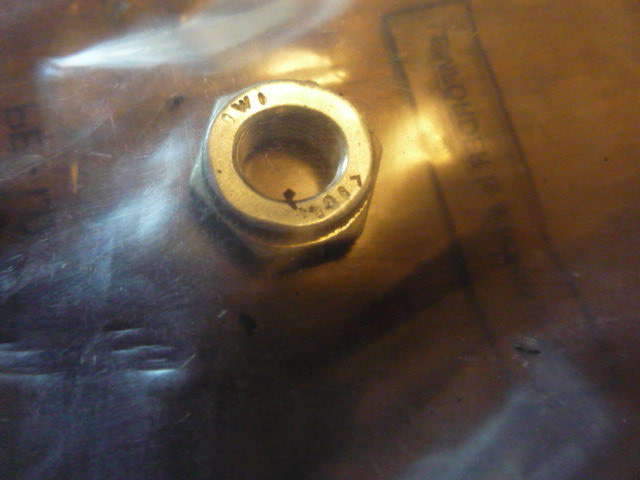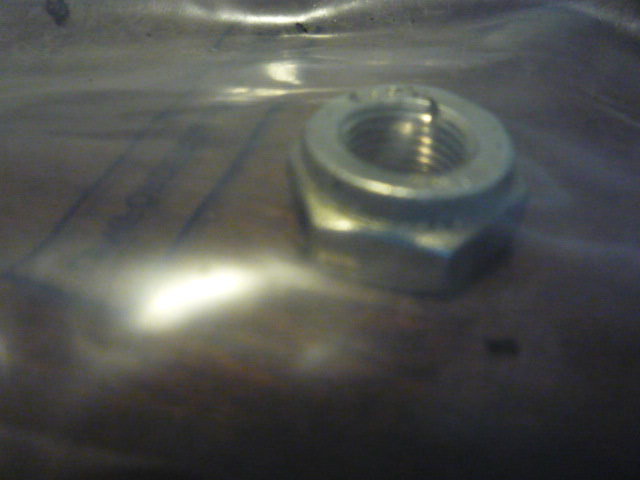Printable Version of Topic
Click here to view this topic in its original format
914World.com _ 914World Garage _ Lemfoerder Tie Rod Ends
Posted by: 914Sixer May 21 2021, 02:59 PM
We all know the tie rod ends started out with a castle nut and cotter pin. Then they went to a nylon locking nut. Lots of people were concerned about this. Well it seems the new plan is to go with steel oval nut collar. So, if you have the nylon style nut you might want to update your nut. Tried to get the best picture without opening the bag.
Attached image(s)

Posted by: IronHillRestorations May 21 2021, 05:48 PM
Prevailing torque fastener
Posted by: bdstone914 May 21 2021, 05:57 PM
What iscthe trick for holding the threaded part while tightening the nut to correct torque?
Posted by: 914Sixer May 21 2021, 06:35 PM
Good point about how to torque it down. The flip side is how are you going to get the nut back off.
Posted by: bbrock May 21 2021, 06:44 PM
I was able to torque mine down by putting a jack under the tie rod end and applying just enough pressure to create enough friction to keep the joint from spinning as it was torqued.
Posted by: bdstone914 May 21 2021, 07:05 PM
Good point about how to torque it down. The flip side is how are you going to get the nut back off.
Thin blade angle grinder or impact wrench with oressure on the bottom of the tie rod end.
Posted by: Superhawk996 May 22 2021, 06:32 AM
Good point about how to torque it down. The flip side is how are you going to get the nut back off.
By design, the torque it takes to rotate a taper in a properly fitting tapered hole is far larger than the torque to loosen a prevailing torque fastener.
Analogy. Many machine tools are held in place by a taper and resist rotational torque of the cutting operation with no keyway. Jacobs taper on drill chucks. Morse tapers for lathes. R8 taper for mills.
Ball joints should be installed into the strut, clean, dry, and with no lubrication.
Once installed properly, the nut is little more than a belt and suspenders. Thus, the move away from more expensive castle nuts and cotters toward prevailing torque fasteners. Would you agree that once installed, you'll notice it usually takes serious persuation to remove the tie rod ball from the strut? That is due to the "locking" action of the taper and the high friction to move the surfaces relative to one another.
Posted by: Shivers May 22 2021, 07:17 AM
https://www.assemblymag.com/articles/84160-running-interference
Best Practices for Press-Fit Assembly: Sounds like design really dictates whether it gets anything. In the article it talks about an adhesive being used on tapered parts designed for it.:
Anaerobic adhesive is another material that can be applied to the parts to augment press-fit assembly. The adhesive will completely seal the joint, prevent corrosion, distribute stress more evenly, and produce a stronger, more rigid assembly. The adhesive also allows engineers to loosen the tolerance requirements for the parts and reduce the bulkiness of the parts, which is needed to generate the pressure that holds the parts together.
I do not, but some anti- seize makers note ball joint tapers as a correct location for their product. Like this one: https://neverseizeproducts.com/nsb-150-black-moly-flat-top-can-extreme-pressure-lubricant-16-oz/
Powered by Invision Power Board (http://www.invisionboard.com)
© Invision Power Services (http://www.invisionpower.com)
